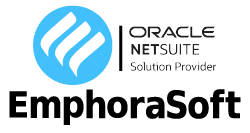The Impact of Global Economic Trends on ERP Adoption and Digital Transformation
In today’s rapidly evolving business landscape, the relationship between global economic trends and enterprise technology adoption has never been more critical. As organizations navigate uncertain economic waters, Enterprise Resource Planning (ERP) systems have emerged as essential tools for business resilience, operational efficiency, and strategic growth. This comprehensive analysis explores how macroeconomic forces are reshaping ERP adoption and accelerating digital transformation initiatives across industries and regions.
The Evolving Economic Landscape and Its Influence on Enterprise Technology
The global economy has experienced significant turbulence in recent years, from pandemic disruptions to supply chain challenges, inflationary pressures, and geopolitical tensions. These economic headwinds have forced organizations to reassess their technology investments, with a particular focus on systems that deliver measurable value and competitive advantage. ERP solutions, which integrate and streamline core business processes, have become focal points in this strategic recalibration.
Current Economic Trends Reshaping Business Priorities
Several key economic trends are currently influencing enterprise technology decisions:
Persistent Inflation Pressures: Rising costs across labor, materials, and operations have prompted businesses to seek efficiencies through automation and process optimization. ERP systems with robust financial management capabilities have become essential for navigating these inflationary environments.
Labor Market Transformations: The shift to hybrid work models, combined with ongoing skills shortages in many sectors, has accelerated investment in technologies that support remote operations, knowledge sharing, and process standardization.
Supply Chain Volatility: Continued disruptions in global supply networks have highlighted the critical importance of visibility, agility, and resilience—all capabilities that modern ERP systems can enhance.
Regional Economic Divergence: Different rates of economic recovery and growth across regions have created a multi-speed global economy, influencing ERP adoption patterns and priorities across markets.
Sustainability Imperatives: Growing regulatory and market pressures around environmental and social governance (ESG) have expanded the role of ERP systems to include sustainability reporting and compliance management.
These economic forces are not merely background conditions but active drivers of enterprise technology strategy, particularly in the ERP domain.
ERP Market Growth Amid Economic Uncertainty
Despite—and in many cases because of—economic challenges, the global ERP market continues to demonstrate remarkable resilience and growth. Current projections indicate that the market will expand significantly over the next several years, driven by both new implementations and upgrade cycles.
Market Expansion Through Economic Cycles
The ERP software market has historically shown counter-cyclical tendencies during economic downturns. When facing economic pressure, organizations often accelerate rather than delay ERP investments for several reasons:
Cost Control Imperatives: In challenging economic times, the efficiency gains and cost reductions enabled by modern ERP systems become particularly attractive. Organizations increasingly view ERP not as a discretionary expense but as a strategic investment in operational efficiency.
Data-Driven Decision Making: Economic uncertainty elevates the importance of accurate, timely business intelligence. ERP systems that offer advanced analytics capabilities enable organizations to make more informed decisions in volatile conditions.
Competitive Necessity: As industry leaders leverage digital tools to gain market advantage during downturns, competitors feel increased pressure to modernize their own systems or risk falling permanently behind.
Business Model Transformation: Economic disruptions often accelerate structural changes in business models and customer engagement approaches, creating new requirements that legacy systems cannot support.
This counter-cyclical pattern helps explain why ERP adoption continues to grow even during periods of economic constraint.
Cloud ERP Adoption: Economics as a Catalyst
One of the most significant trends in the ERP landscape is the accelerating shift to cloud-based delivery models. Economic factors have played a substantial role in this transition:
Financial Model Advantages: The subscription-based pricing of cloud ERP solutions transforms technology spending from capital expenditure to operational expenditure, reducing upfront costs and improving cash flow management—particularly attractive during uncertain economic periods.
Scalability Benefits: Cloud ERP systems allow organizations to scale resources up or down based on business conditions, creating flexibility that is especially valuable during economic volatility.
Reduced IT Infrastructure Costs: By eliminating the need for extensive on-premises hardware and maintenance, cloud ERP reduces total cost of ownership, an important consideration when IT budgets face scrutiny.
Faster Time to Value: Cloud implementations typically deploy more quickly than traditional on-premises projects, accelerating return on investment and reducing implementation risk.
Recent statistics indicate that cloud ERP adoption now represents the majority of new implementations, with particularly strong growth in mid-market segments where capital constraints are often most acute.
Digital Transformation: Economic Necessity Rather Than Luxury
The economic context has fundamentally changed how organizations view digital transformation initiatives. What was once often perceived as a forward-looking investment for future competitiveness has increasingly become an immediate economic necessity.
From Strategic Vision to Survival Imperative
Economic pressures have compressed the timeline for digital transformation in several ways:
Operational Efficiency Requirements: As margins face pressure from inflation and other economic factors, digital transformation initiatives focused on automation, process optimization, and workforce productivity have moved from “nice-to-have” to essential.
Customer Experience Imperatives: Economic constraints have intensified competition for customer loyalty, elevating the importance of digital capabilities that enhance customer engagement and service delivery.
Business Model Resilience: Economic disruptions have exposed vulnerabilities in traditional business models, accelerating transitions to more flexible, digitally-enabled approaches better suited to volatile conditions.
Supply Chain Reconfiguration: Economic and geopolitical tensions have necessitated supply chain redesign, requiring digital capabilities to manage increased complexity and risk.
ERP systems have emerged as central platforms for executing these transformation imperatives, serving as integration hubs for a wide range of digital initiatives.
The Accelerating Pace of Digital ERP Implementation
The urgency of digital transformation has influenced how organizations approach ERP implementation:
Phased Implementation Approaches: Rather than pursuing lengthy, comprehensive ERP deployments, organizations increasingly favor rapid, phased approaches that deliver incremental value while maintaining momentum.
Focus on Quick Wins: Implementation strategies now often prioritize high-impact, rapid-return capabilities that address immediate economic pressures over perfectionist, all-encompassing approaches.
Integration of Emerging Technologies: Economic imperatives are driving faster adoption of AI, automation, and advanced analytics within ERP environments to maximize productivity and insight.
Expansion Beyond Traditional Boundaries: Modern ERP implementations increasingly extend beyond internal operations to encompass customer, supplier, and partner ecosystems, creating more resilient business networks.
These accelerated approaches reflect the growing recognition that digital transformation through ERP is not a discretionary initiative but an economic survival strategy.
Industry-Specific ERP Trends and Economic Influences
Economic conditions affect industries differently, creating varied patterns of ERP adoption and digital transformation across sectors.
Manufacturing: Reinvention Through Economic Challenge
The manufacturing sector has faced particular economic pressures, from supply chain disruptions to labor shortages and input cost inflation. These challenges have catalyzed several manufacturing-specific ERP trends:
Integrated Supply Chain Visibility: Manufacturing ERP implementations increasingly prioritize end-to-end supply chain visibility to mitigate disruption risks and manage inventory costs more effectively.
Shop Floor Automation: Economic pressures on productivity and labor costs have accelerated investment in manufacturing execution systems (MES) tightly integrated with ERP.
Predictive Maintenance Capabilities: Cost pressures have elevated the importance of ERP-connected asset management solutions that minimize downtime and extend equipment life.
Product Lifecycle Management Integration: Compressed innovation cycles, driven by competitive and economic pressures, have increased focus on PLM capabilities within manufacturing ERP environments.
These manufacturing-specific trends demonstrate how economic factors shape not just whether organizations adopt ERP but which capabilities they prioritize.
Retail and Distribution: ERP as Economic Adaptation Tool
The retail and distribution sectors have experienced dramatic economic shifts, from channel disruption to inflationary pressures and changing consumer behaviors. These dynamics have influenced retail-specific ERP trends:
Unified Commerce Capabilities: Economic necessity has accelerated retail ERP evolution toward unified platforms that integrate online and offline channels, inventory, and customer data.
Dynamic Pricing Capabilities: Inflationary environments have increased the value of ERP systems that support sophisticated, responsive pricing strategies across channels.
Intelligent Inventory Optimization: Economic pressures on working capital have elevated the importance of AI-driven inventory management within retail ERP environments.
Enhanced Customer Intelligence: Competitive intensity during economic constraint has driven greater investment in customer analytics capabilities within retail ERP implementations.
As with manufacturing, these retail-specific patterns illustrate how economic conditions shape the specific contours of ERP adoption and prioritization.
Financial Services: ERP as Regulatory and Economic Shield
The financial services sector faces unique economic challenges, including interest rate volatility, regulatory pressures, and digital disruption. These factors have created distinct ERP trends within the industry:
Regulatory Compliance Automation: Economic pressures to reduce compliance costs have driven financial institutions toward ERP solutions with robust regulatory reporting capabilities.
Cost Allocation Sophistication: Margin pressures have increased focus on ERP systems that provide granular insight into profitability by product, channel, and customer segment.
Customer Journey Integration: Competitive economic conditions have accelerated adoption of ERP solutions that support seamless, data-driven customer experiences.
Risk Management Enhancement: Economic volatility has elevated the importance of ERP systems that strengthen risk visibility and mitigation capabilities.
Across industries, economic conditions serve not just as background context but as active shapers of ERP priorities and implementation approaches.
Small and Mid-Market Business ERP Adoption: Economic Considerations
While enterprise-scale organizations have historically led ERP adoption, economic trends are reshaping adoption patterns among small and mid-market businesses.
Democratization of ERP Technology
Several economic factors have made sophisticated ERP capabilities more accessible to smaller organizations:
Cloud Deployment Cost Advantages: The subscription models of cloud ERP have dramatically reduced entry barriers for smaller businesses, eliminating large upfront capital investments.
Industry-Specific Pre-Configurations: Economic pressures on implementation timelines and budgets have driven growth in pre-configured, industry-specific ERP solutions that reduce customization requirements for smaller businesses.
Partner Ecosystem Expansion: The economic incentives of the cloud model have expanded the ecosystem of implementation partners specializing in small and mid-market deployments, improving accessibility and reducing costs.
Scalable Growth Platforms: Economic uncertainty has increased the appeal of ERP platforms that can scale with business growth, avoiding the disruption of system replacements as organizations expand.
These factors explain the accelerating adoption of ERP among businesses that previously considered such systems beyond their economic reach.
Small Business Success Factors in Economic Constraint
For smaller organizations navigating ERP adoption amid economic challenges, several factors have proven particularly important:
Phased Implementation Approaches: Economic constraints have made incremental, phased ERP deployments particularly important for smaller businesses with limited resources and risk tolerance.
Focus on Core Process Efficiency: Small businesses increasingly begin their ERP journeys with modules addressing their most economically impactful processes rather than comprehensive deployments.
Leveraging Industry Templates: Economic pressures on project timelines have increased the preference for industry-specific templates and best practices rather than extensive customization.
Partner Selection Emphasis: Resource constraints have elevated the importance of implementation partners with specific small business experience and fixed-price methodologies.
As economic conditions continue to evolve, the democratization of ERP technology across business size segments represents one of the most significant trends in the market.
Implementation Challenges in the Current Economic Climate
While economic factors have accelerated ERP adoption in many respects, they have also created distinctive implementation challenges that organizations must navigate.
Resource Constraints and Implementation Approaches
Economic pressures have influenced how organizations approach ERP implementation resources and methodologies:
Skills Shortage Mitigation: With technology talent at a premium, organizations increasingly leverage implementation partners, automated configuration tools, and knowledge transfer approaches to address skills gaps.
Budget Optimization Strategies: Economic constraints have driven greater adoption of fixed-price implementations, phased approaches, and value-based scoping to maintain budget discipline.
Change Management Adaptation: Resource limitations have prompted more targeted change management approaches focused on key stakeholders and critical business processes rather than comprehensive organizational change programs.
Risk Mitigation Focus: Economic uncertainty has elevated the importance of implementation methodologies with embedded risk management components and clearly defined contingency plans.
These adaptations reflect the reality that while ERP remains a strategic priority, implementation approaches must evolve to align with economic constraints.
Measuring and Communicating Value in Uncertain Times
The economic context has also changed how organizations measure and communicate the value of their ERP investments:
Shortened ROI Timeframes: Economic pressures have increased emphasis on ERP benefits that deliver near-term financial impact rather than long-term strategic advantages alone.
Operational Metrics Emphasis: Implementation success metrics increasingly focus on specific operational improvements (inventory reduction, labor productivity, etc.) with direct economic impact.
Continuous Value Measurement: Rather than point-in-time ROI calculations, organizations increasingly implement continuous value tracking processes throughout their ERP journeys.
Executive Communication Frameworks: Economic scrutiny has elevated the importance of clear, business-focused communication about ERP value to maintain executive support through implementation challenges.
These evolving approaches to value measurement and communication are essential adaptations to the economic realities facing many organizations.
The Future of ERP in a Changing Economic Landscape
Looking ahead, several economic trends appear likely to shape the next evolution of ERP systems and implementation approaches.
Emerging Economic Influences on ERP Development
Several economic factors will influence ERP product development priorities:
Supply Chain Resilience Imperative: Ongoing economic and geopolitical uncertainty will drive continued enhancement of supply network design, simulation, and risk management capabilities within ERP environments.
Sustainability Economics: Growing economic implications of sustainability performance will accelerate development of ERP capabilities supporting environmental compliance, carbon accounting, and circular economy business models.
Inflation Management Tools: Persistent inflationary pressures will increase focus on ERP capabilities that support dynamic pricing, cost modeling, and margin protection.
Workforce Productivity Enhancement: Economic pressures on labor costs and availability will drive further development of AI and automation capabilities within ERP workflows.
These economic factors will shape not only which ERP capabilities organizations implement but which features vendors prioritize in their development roadmaps.
The Changing Economics of ERP Ownership
The economic model of ERP ownership itself continues to evolve in several important ways:
Value-Based Pricing Evolution: Economic pressures on technology investments are accelerating the shift toward outcome-based and value-based pricing models rather than traditional user-based licensing.
Ecosystem Economics: The economic relationship between core ERP platforms and their surrounding application ecosystems is evolving toward more integrated business models and user experiences.
Continuous Innovation Economics: The subscription model of cloud ERP is changing expectations around innovation delivery, with economic pressure to demonstrate continuous value enhancement rather than traditional upgrade cycles.
Total Value of Ownership: Economic evaluation of ERP solutions is shifting from total cost of ownership (TCO) to total value of ownership (TVO), encompassing broader business impact beyond direct system costs.
These evolving economic models will fundamentally reshape how organizations evaluate, select, and manage their ERP investments in coming years.
Strategic Recommendations for Organizations
Based on these economic trends and their impact on ERP adoption, several strategic recommendations emerge for organizations navigating their digital transformation journeys.
Aligning ERP Strategy with Economic Conditions
Organizations can maximize ERP value by explicitly connecting their implementation approaches to economic realities:
Economic Scenario Planning: Develop explicit links between economic scenarios and ERP roadmap priorities, with contingency plans for acceleration or deceleration based on changing conditions.
Value Chain Focus: Prioritize ERP capabilities that address the most economically vulnerable or strategically important segments of your value chain rather than pursuing uniform enhancement.
Economic Risk Integration: Incorporate economic risk factors (inflation, labor availability, supply disruption, etc.) directly into ERP business cases and implementation planning.
Executive Alignment: Establish clear connections between ERP capabilities and executive-level economic concerns to strengthen organizational commitment through economic cycles.
These alignment practices help ensure that ERP investments remain strategically relevant despite changing economic conditions.
Building Economic Resilience Through ERP Capabilities
Beyond implementation approach, organizations should prioritize specific ERP capabilities that enhance economic resilience:
Advanced Analytics Maturity: Invest in developing the organizational capabilities needed to fully leverage ERP analytics for economic scenario planning and response.
Process Standardization: Prioritize process standardization and simplification before automation to create a more economically efficient foundation for digital capabilities.
Ecosystem Integration: Extend ERP value beyond organizational boundaries to create more resilient partner networks and customer connections.
Talent Strategy Alignment: Develop explicit connections between ERP capabilities and talent strategies to address changing workforce economics and skill requirements.
By focusing on these capability areas, organizations can ensure their ERP investments deliver not just operational improvements but genuine economic resilience.
Conclusion: ERP as Economic Adaptation Platform
As we have explored throughout this analysis, the relationship between economic trends and ERP adoption has evolved significantly. Rather than viewing ERP merely as a business system influenced by economic conditions, forward-thinking organizations increasingly recognize these platforms as essential tools for economic adaptation and resilience.
The most successful organizations approach ERP not as a technology project but as a continuous business capability evolution aligned with their changing economic environment. By explicitly connecting their ERP strategies to the economic challenges and opportunities they face, these organizations transform what might otherwise be a significant cost center into a strategic enabler of business performance.
As economic conditions continue to evolve, this strategic approach to ERP—focused on value, resilience, and adaptation rather than technology alone—will distinguish organizations that merely survive economic challenges from those that emerge stronger through them.
The future belongs to organizations that recognize ERP not just as a system of record but as a platform for economic transformation and competitive advantage in an uncertain world.
FAQ's
Key trends include persistent inflation pressures, labor market transformations with a shift to hybrid work models, supply chain volatility, regional economic divergence, and growing sustainability imperatives—all of which drive organizations to seek more efficient, agile, and resilient ERP solutions.
Rising costs force organizations to seek automation and process optimization. ERP systems with strong financial management features become strategic tools to control costs and improve operational efficiency, making them essential even during economic downturns.
The shift toward remote and hybrid work, coupled with skills shortages, drives investment in ERP solutions that support remote operations, facilitate knowledge sharing, and standardize processes to boost productivity and collaboration.
ERP platforms provide end-to-end supply chain visibility and agility, enabling companies to manage disruptions, optimize inventory, and enhance resilience in an unpredictable global supply network.
Different recovery rates and growth patterns across regions create a “multi-speed” global economy. Organizations tailor their ERP strategies to meet local market conditions, influencing the pace and scope of ERP implementations in various regions.
As environmental and social governance pressures mount, ERP systems are increasingly used for sustainability reporting, compliance management, and tracking metrics such as carbon footprint and circular economy initiatives.
Cloud ERP offers subscription-based pricing, lower upfront capital costs, scalability, and faster implementation times. These factors help companies manage cash flow better and adjust resources in response to economic volatility.
ERP systems enable cost control, data-driven decision making, and streamlined operations. They also support quick adaptations in business models, helping companies maintain competitiveness even when market conditions are challenging.
Resource constraints, skills shortages, and the need for rapid, incremental deployment models require organizations to adopt fixed-price, phased implementation strategies with embedded risk management and targeted change management efforts.
Leaders should integrate economic scenario planning into ERP roadmaps, focus on value chain priorities, incorporate economic risk factors in business cases, and continuously monitor operational improvements. Emphasizing quick wins, advanced analytics, and ecosystem integration further ensures ERP investments drive both immediate and long-term value.






